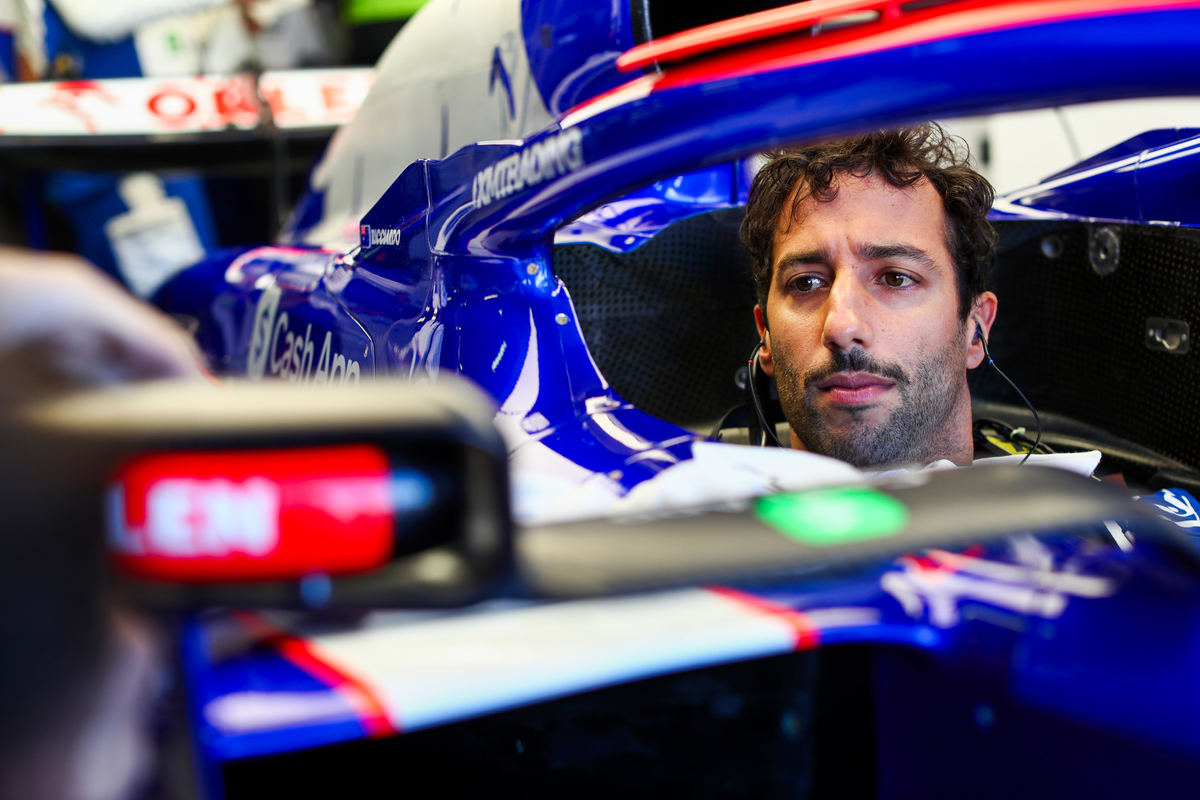

Ricciardo rejoined the Faenza operation midway through last season in place of Nyck de Vries in a move that reunited him with the squad he raced for under the Toro Rosso banner in 2012 and 2013.
The eight-time race winner’s return coincided with work behind the scenes to reimagine the operation which, since its acquisition by Red Bull in 2006, had been used as a feeder team for Red Bull Racing.
Those ambitions have changed with the Faenza organisation rebranded for 2024 in a move designed to signify its efforts to stand on its own feet rather than support its sister organisation.
Part of that has been a shift in mantra when it comes to drivers, with experience now more highly valued than was formerly the case.
“We need, in our eyes, we need at least one experienced driver, because it’s changing a lot of the dynamics in the team,” Bayer told Speedcafe of the team’s new image.
“We have a driver like Daniel. I keep saying, he’s much more than a driver.
“He’s somebody who’s bringing years of experience when it comes to how to set-up the car, years of experience when it comes to media, when it comes to sponsorship, he knows the whole game.
“For a young team like outs, it’s an invaluable asset to have a driver like Daniel, who is incredibly quick and at the same time helping up a lot with, mainly around the car.
“Honestly, it’s very much about the set-up and the aero balance and technical balance, and that’s what they are discussing all the time, basically.
“He’s giving us feedback whereas, with a young driver, we usually would give that young driver to try this, this that. Daniel says, why don’t we try this? Why don’t we try that?
“That’s the little but very important difference.”
Ricciardo’s engineering feedback left an immediate impression when he returned to the team.
“Pretty much straight away you could feel the quality of the feedback, not only the feedback on the handling of the car,” explained Jonathan Eddolls, head of trackside engineering, soon after Ricciardo’s return.
“Obviously, he’s got a wealth of experience and he’s driven many different cars and experienced many different ends of the performance spectrum.
“Having that feedback on our car was extremely valuable for us.
“I think the other things that were impressive, and reminders of what experience can bring, were: how he could understand the race; the feedback that he could give live; how he thought the tyres were behaving – was it a one-stop or a two-stop; or if there was a Safety Car, could he reheat these tyres? Or would we need to fit a fresh set,” Eddolls added.
“A lot of the time, we’re making those decisions from the pit wall based on data.
“When it’s not clear cut, having someone with that experience can really, really make a difference.”
On top of his value as a driver, there is a significant commercial value attached to Ricciardo.
He is one of Formula 1’s most recognisable personalities and featured on American television multiple times while only a reserve driver for Red Bull Racing last year.
His social media reach is also among the best in the sport; he’s the fifth most popular driver on both Instagram and X, with a combined audience that makes him the fourth most popular driver with a following approaching 12.5 million fans.
And while teams will not consider a driver’s clout on social media platforms, their commercial attractiveness is a critical component – sponsors want to work with brands that will be well represented and looked after.
That is the point Bayer makes. Ricciardo’s worth goes beyond the cockpit and so while his on-track performances may not be exactly where the team wants them to be, there is perhaps a little extra wiggle room for the Australian.





















Discussion about this post